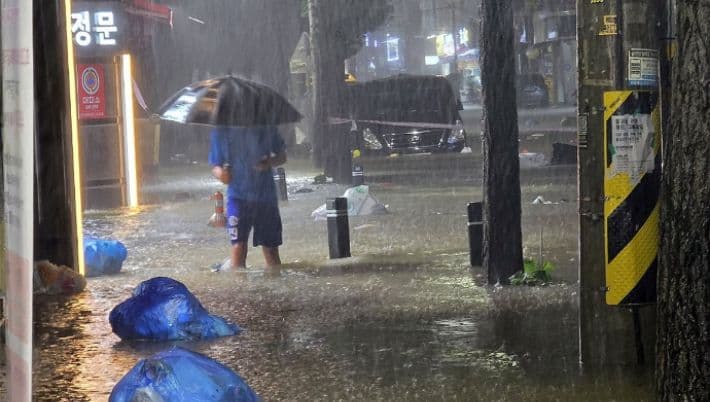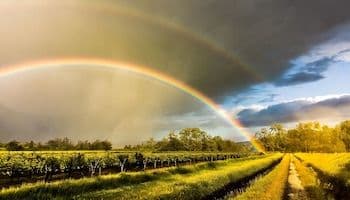Navigating Korea's Unpredictable Skies: The Silent Power of KMA Weather Nuri
Unpack the pivotal role of KMA Weather Nuri. Discover how this digital portal empowers South Koreans with critical climate data, fostering resilience against extreme heat and deluges.

Beyond the Daily Forecast: KMA Weather Nuri's Mandate
The Weather Nuri portal is far more than just a website for checking if it'll rain tomorrow. It stands as a vital national asset, particularly as South Korea grapples with an increasing frequency of extreme weather phenomena. Its mandate extends well beyond simple temperature readings or cloud cover predictions, delving deep into public safety and disaster preparedness. When a scorching heatwave sends temperatures soaring to 35-37 degrees Celsius nationwide, triggering widespread heatwave warnings, KMA Weather Nuri is the primary source of critical information. It doesn't just report the heat; it issues alerts, highlights sensible temperatures, and implicitly guides citizens towards safety measures. Similarly, as torrential downpours become more common, with forecasts predicting up to 150mm of rain in some areas, the portal shifts its focus to potential flood risks and necessary precautions. Even coastal dangers like strong swells, or 'neoul', are meticulously tracked, warning against potential accidents. This comprehensive approach underscores KMA Weather Nuri's fundamental role: to equip the public with the foresight needed to navigate Korea's increasingly unpredictable climate, transforming raw meteorological data into actionable intelligence for everyday life and critical safety.
From Data Deluge to Public Safety: The Technology Behind the Portal
Transforming raw atmospheric measurements into life-saving information requires an impressive technological backbone, a silent powerhouse operating behind . Imagine the sheer volume of data constantly streaming in: satellite imagery, radar scans, ground-based sensor readings from every corner of the peninsula, and even ocean buoys. This isn't just about collecting numbers; it's about processing a "data deluge" in real-time. While modern news outlets may use AI to summarize content, it's a logical inference that KMA itself leverages sophisticated and machine learning algorithms. These advanced systems are crucial for analyzing complex atmospheric models, identifying subtle patterns, and rapidly generating highly localized forecasts and severe weather warnings. It's this continuous computational crunching that allows KMA Weather Nuri to pinpoint specific regional temperatures—like Daejeon's 36.6 degrees or Daegu's 37 degrees—or predict isolated thunderstorms with accompanying gusts and lightning. This isn't just about showing data; it's about synthesizing it into a coherent, actionable narrative that empowers citizens to understand and react to their immediate environmental risks.

Real-World Impact: How Timely Alerts Save Lives
The true measure of KMA Weather Nuri's efficacy lies in its tangible impact on public safety, turning abstract data into concrete protection. Consider the recent incident in Taean, where four night rock fishing enthusiasts found themselves isolated but were ultimately rescued. While the source doesn't explicitly detail KMA's direct role in that specific rescue, it's a powerful illustration of the coastal risks KMA does warn about, like strong swells. These warnings, disseminated through the Nuri portal, are designed to prevent such predicaments. Beyond isolated incidents, the portal's continuous heatwave warnings, such as those that kept and surrounding regions under a severe heat alert, directly influence public behavior. People flock to cool valleys and water parks, or simply opt to stay indoors, armed with the knowledge of soaring temperatures. Similarly, the detailed rainfall forecasts – whether a light drizzle of 0.1mm or a potentially devastating 150mm – enable communities to brace for flash floods and prepare for property damage, demonstrating how timely, precise alerts serve as an invisible shield, guiding citizens away from harm and fostering a culture of preparedness.

Building Climate Resilience: Empowering Communities Through Information
Beyond immediate crisis response, KMA Weather Nuri plays a pivotal role in fostering long-term climate resilience across . By offering granular, localized forecasts and historical data, it empowers individuals and communities to understand and adapt to evolving weather patterns. Take the recurring summer heatwaves, vividly captured by thermal cameras showing urban areas glowing red with heat: KMA Nuri provides not just daily temperatures but also sensible heat indices and heatwave warnings, allowing city planners, emergency services, and even individual households to implement proactive cooling strategies. The detailed precipitation forecasts, specifying rain amounts for various regions, from Gyeonggi to Gyeongsang, enable agricultural sectors to manage crops, construction sites to secure equipment, and local governments to prepare flood defenses well in advance. This constant stream of accessible, detailed meteorological intelligence helps shift the national mindset from merely reacting to weather events to actively building resilience against them. It transforms passive recipients of information into informed decision-makers, fostering a more robust and adaptable society in the face of a changing climate.
The Horizon Ahead: Evolving Weather Intelligence for Korea
Looking ahead, KMA Weather Nuri is poised for continuous evolution, driven by the relentless march of climate change and technological innovation. The subtle references to AI-powered summarization in the source material hint at a future where isn't just an auxiliary tool but deeply integrated into the very fabric of weather prediction and dissemination. We can anticipate even more sophisticated AI models capable of processing vast datasets from next-generation satellites and enhanced ground networks, leading to hyper-localized forecasts with unprecedented accuracy. Imagine real-time micro-climate predictions for specific neighborhoods or even individual streets. The portal will likely integrate more seamlessly with smart city infrastructure and emergency response systems, enabling automated alerts and coordinated actions. This isn't merely about predicting the weather; it's about developing a comprehensive weather intelligence ecosystem that anticipates threats, mitigates risks, and supports national development. KMA Weather Nuri will remain at the forefront, ensuring South Korea's preparedness for whatever the increasingly unpredictable skies may bring, continuously adapting and innovating to safeguard lives and livelihoods.
Related Articles

Korea's Weather Oracle: Unveiling the Art and Science of 날씨누리

Korea's Weather Oracle: Unveiling the Art and Science of 날씨누리

Weather Whiplash: Navigating Korea's Shifting Summer Skies

Weather Whiplash: Navigating Korea's Shifting Summer Skies

South Korea's Shifting Skies: Navigating an Era of Extreme Weather

South Korea's Shifting Skies: Navigating an Era of Extreme Weather

The Unseen Architects of Tomorrow: How Weather Forecasts Guide Global Decisions
